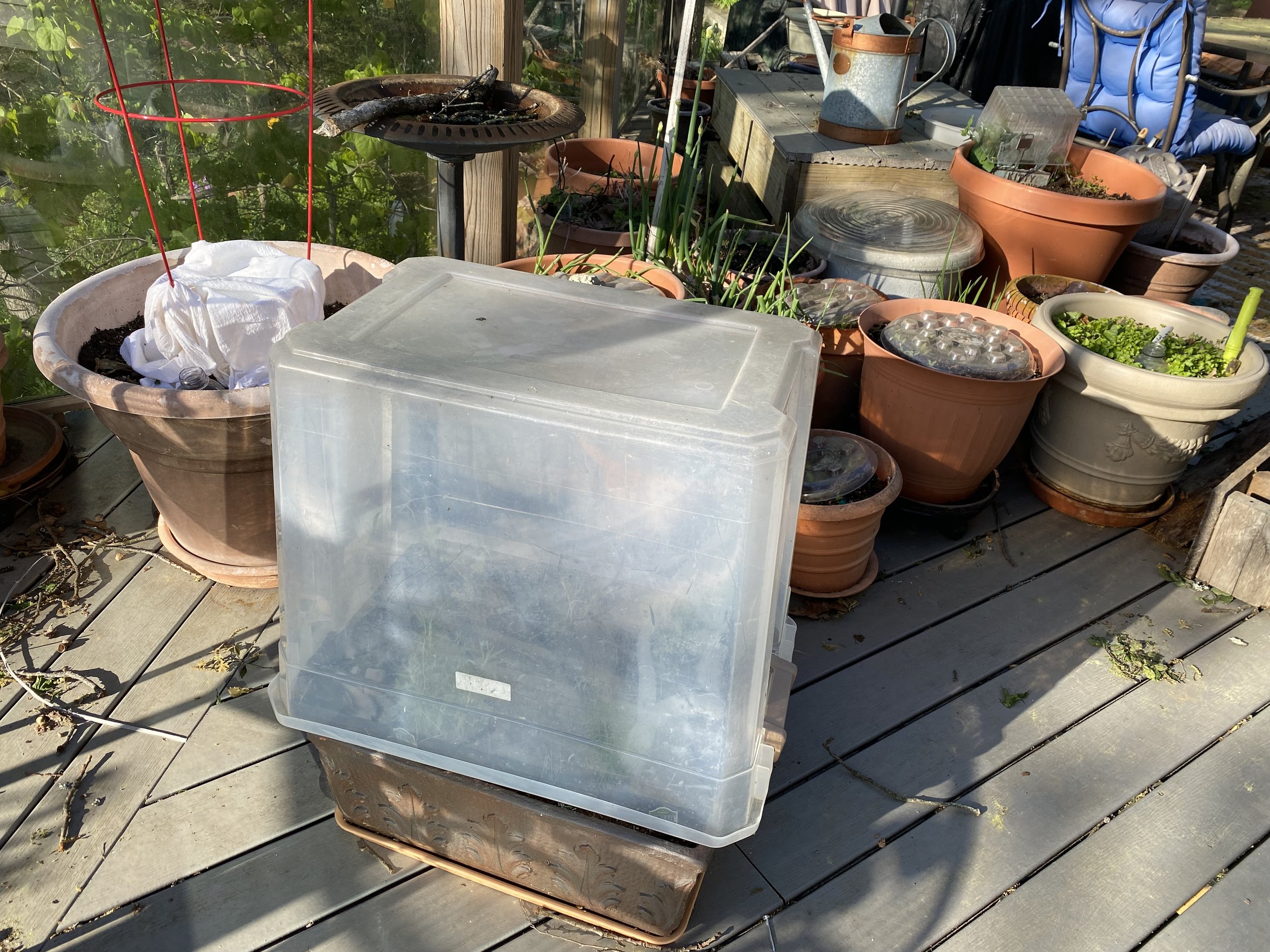Home Pot Garden
/One of my past pot gardens growing on my back deck. (Photo by Charlotte Ekker Wiggins)
Home Pot Garden
Some people are calling the resurgence in gardening Victory Gardening 2.0, a reference to the gardens US citizens grew during World War II. I think “Pot Garden” is more appropriate. These pot gardens can grow almost anywhere and still provide fresh produce and herbs.
I have grown a pot garden on my southern facing deck for many years and here are my tips to getting started, with the help of the National Gardening Bureau:
Know your hardiness zone, which is an average over 13 years of the coldest temperatures where you live,. This will determine what you can grow. I am in USDA Hardiness zone 5B. If you don’t know your growing zone, enter your zip code here to find your zone.
What do you and your family like to eat? No point in growing something no one will touch. Make a list of what your family likes to eat and research their harvest times. Right now snow peas, lettuce, radishes, spinach, broccoli and cauliflower are good to grow, they prefer the cooler spring temperatures.
Also consider growing favorite herbs you use in cooking, there’s nothing better than fresh herbs out of your own garden.
Herbs are excellent to grow in pots and great to add to cooking. (Photo by Charlotte Ekker Wiggins)
More on Setting up a Home Pot Garden
3. Seeds or Starts? If this is your first foray into gardening, get plant starts, those will grow faster and encourage you to plant more. Seeds will work as long as you read the packages and plant at the appropriate time.
4. Know Your Soil. If you are sowing, or adding starts, to soil, make sure you know what kind of soil you have, your local Extension office can run a test and tell you. One test costs $15.
5. Plan where you will grow. If you are making a pot garden that’s easy. If you are growing directly into soil it helps to have an area planned.
6. Grow both vegetables and flowers. Flowers attract pollinators that will make your vegetables healthier and more abundant. Mix vegetables and flowers, don’t plan them separately.
7. Start Composting. If you don’t already compost, start composting. You will repurpose kitchen scraps and help keep your garden soil healthy.
Keep gardening tools handy, here I have children’s tools close by. (Photo by Charlotte Ekker Wiggins)
8. Punch holes in plastic bottles and bury them in your pots to help keep plant roots hydrated.
9. Stake plants. Some plants like tomatoes and peppers will need support to grow. Find straight garden sticks and consider tomato cages for vining plants like peas.
10. Monitor for pests. Check under leaves; remove by hand. Some garden pests like rabbits and deer will tend to stay away from pot gardens.
Pot gardens are not only easy to establish but work well through the growing season and don’t require a lot of space. Good luck and have fun!
Charlotte














